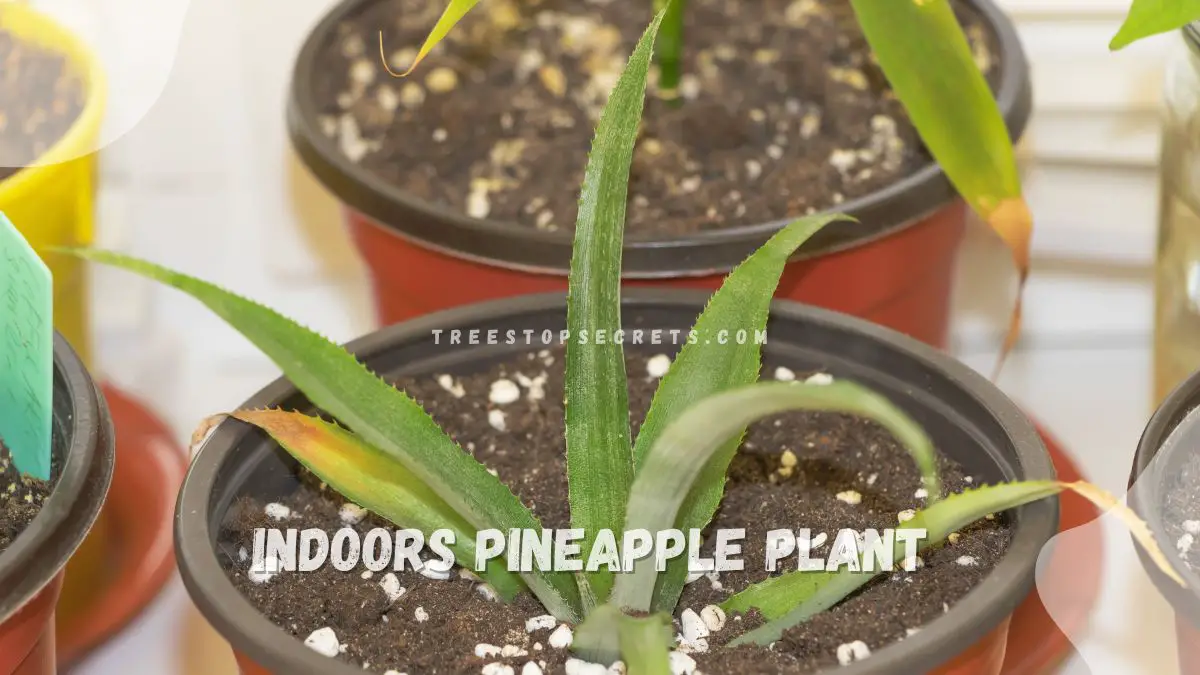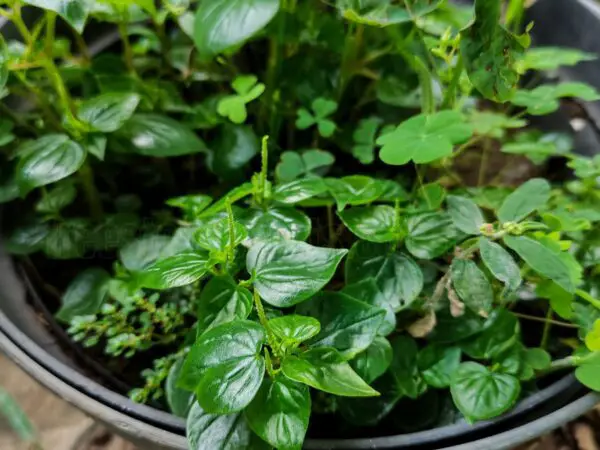Did you know that you can grow a pineapple plant indoors with just a discarded pineapple top? Yes, it's true! Imagine having your own tropical plant thriving right in your living room. Not only does it add a touch of exotic greenery to your space, but it also provides a fun and rewarding gardening experience.
With simple steps and minimal maintenance, you can enjoy watching your pineapple plant grow and even yield fruit over time. Stay tuned as we guide you through the process of growing a pineapple plant indoors, bringing a slice of the tropics into your home sweet home.
Key Takeaways
- Understand the needs of pineapple plants to successfully grow them indoors.
- Prepare the planting materials and environment before starting the planting process.
- Follow proper planting techniques to ensure the pineapple plant thrives indoors.
- Provide consistent care and attention to your pineapple plant for optimal growth.
- Regular maintenance is crucial for the health and development of your indoor pineapple plant.
- Propagate pineapple plants to expand your indoor fruit production effectively.
Understanding Pineapple Plants
Pineapple plants, also known as pineapple houseplants, can thrive indoors with the right care. These tropical pineapple houseplants bring a touch of exotic beauty to your home.
Ideal Conditions
- Place the pineapple plant in a warm room with bright light to support its growth.
- Ensure the room has adequate humidity levels, ideally around 50-70%.
- Maintain consistent temperatures between 65°F to 85°F for optimal growth and health.
Varieties to Grow
When considering which pineapple variety to grow indoors, there are several options to choose from:
- Edible Pineapples: Opt for edible varieties if you aim to enjoy homegrown pineapples.
- Ornamental Varieties: Explore ornamental options like dwarf pineapples for their visual appeal.
- Choose a variety based on your space constraints and available lighting conditions.
Preparing for Planting
Choose the Right Spot
Select a sunny location for your pineapple plant to thrive. Avoid areas with temperature changes or drafts. Ensure good air circulation.
List:
- Sunny spot
- Avoid drafty areas
- Good ventilation
When selecting your pineapple, look for a fruit with a healthy crown. Check for any signs of damage or rot. Opt for vibrant green crowns.
Selecting Your Pineapple
Pick a pineapple with a fresh-looking crown. Check for any damage or rot on the fruit. Opt for vibrant green crowns.
List:
- Healthy crown
- No damage or rot
- Vibrant green crown
Planting Your Pineapple
Plant Preparation
When planting pineapples, start by removing excess fruit flesh from the pineapple crown. Allow the crown to dry for a few days before planting it. Prepare the crown by gently twisting off any lower leaves.
To ensure successful growth of your indoor pineapple plant, it is crucial to provide the right environment and care. The initial steps in plant preparation significantly impact the plant's development. For instance, removing excess fruit flesh helps prevent rotting and promotes healthy root formation. Allowing the crown to dry before planting reduces the risk of fungal infections, ensuring a strong start for your pineapple plant.
Potting Essentials
Select a well-draining potting mix when planting your pineapple plant indoors. It is essential to choose a mix that allows excess water to drain effectively, preventing waterlogging that can lead to root rot. Ensure the pot you use has adequate drainage holes to facilitate proper water drainage and aeration for the plant. Repotting the plant becomes necessary when it outgrows its current container, providing more space for root growth and overall plant development.
Proper potting is crucial for the health and growth of your indoor pineapple plant. Using a well-draining potting mix helps prevent water accumulation around the roots, reducing the risk of root diseases. Having drainage holes in the pot ensures that excess water can escape, maintaining optimal soil moisture levels for the plant. Repotting the pineapple plant as it grows ensures that it has enough space for root expansion and prevents overcrowding in its container.
Caring for Your Plant
Watering Techniques
When the top soil layer is dry, water your pineapple plant to maintain adequate moisture levels. Avoid overwatering to prevent root rot, a common issue in indoor plants. Adjust watering frequency according to the plant's growth stage.
Sunlight and Artificial Light
To thrive, your pineapple plant needs 6 hours of sunlight daily. If natural light is insufficient, use grow lights as a supplement. Rotate the plant regularly for uniform light exposure and balanced growth.
Temperature and Humidity
Maintain temperatures between 65-85°F for optimal pineapple growth indoors. Aim for humidity levels around 50-60% to keep the plant healthy. Protect it from cold drafts and sudden temperature fluctuations for sustained growth.
Maintenance and Growth
Fertilizing Tips
Pineapple plants benefit from regular feeding. Apply a diluted liquid fertilizer every two weeks to provide essential nutrients. Opt for a balanced fertilizer to ensure the plant's overall health. Adjust the fertilization frequency based on how the plant responds to the feeding schedule.
- Use a diluted liquid fertilizer every two weeks
- Choose a balanced fertilizer for optimal health
- Adapt the feeding routine according to the plant's growth
Pruning Practices
Pruning is crucial for encouraging new growth in pineapple plants. Regularly trim off dead or yellowing leaves to promote healthy development. Remove any offsets that may impede the main plant's growth. Prune the plant as needed to maintain its desired shape and size.
- Trim dead or yellow leaves for new growth
- Eliminate offsets hindering main plant's progress
- Prune to uphold desired shape and size
Propagating Pineapples
Steps to Propagate
To propagate pineapples, identify healthy offsets or pups on the mother plant. Gently separate these offsets from the main plant. Dry them before planting individually.
Potting Propagated Plants
Plant the offsets in well-draining soil to ensure proper growth conditions. Maintain adequate moisture and warmth for the new plants. Regularly check their growth progress.
Troubleshooting Common Issues
Problem Solving
Yellowing leaves on your pineapple plant indicate a potential issue with watering. Adjust your watering routine to ensure the soil is moist but not waterlogged. Overwatering can lead to root rot, causing the leaves to turn yellow.
To address blackening at the base of your pineapple plant, consider using appropriate fungicides. This blackening could be a sign of fungal infection, which can spread and harm the plant if left untreated. Choose a fungicide specifically designed for indoor plants.
Prevent dying back after fruiting by providing proper care and maintenance to your pineapple plant. After harvesting fruit, continue to provide adequate sunlight, water, and nutrients. Regularly inspect the plant for any signs of pests or diseases.
- Address yellowing leaves promptly by adjusting watering practices.
- Treat blackening at the base of the plant with appropriate fungicides.
- Prevent dying back after fruiting by providing proper care and maintenance.
Indoor Fruit Production
Encouraging Fruit Growth
Pineapple plants require patience for ripe fruits, ensuring they are ready for harvest. Consistent care routines are vital for supporting fruit growth indoors. Providing adequate nutrients is essential for the plant to develop edible fruits.
- Wait for the pineapple fruit to ripen fully before harvesting.
- Support fruit growth by maintaining consistent care routines.
- Ensure the plant receives sufficient nutrients for fruit development.
Seasonal Care
Summer Care
During the summer, move your pineapple plant outdoors to boost its sunlight exposure. Keep a close eye on the plant for any signs of pests or diseases, as they tend to be more active in warmer weather. Remember to adjust your watering schedule to accommodate the higher temperatures.
- Pros: Increased sunlight exposure promotes healthy growth.
- Cons: Higher risk of pests and diseases due to outdoor environment.
Winter Considerations
As temperatures drop in winter, it's time to bring your pineapple plant back indoors. Shield it from cold drafts and ensure the indoor air isn't too dry, which can harm the plant. In the winter months, reduce watering to prevent overwatering issues.
- Protect from cold drafts
- Monitor indoor humidity levels
Summary
You've learned all about growing pineapple plants indoors, from understanding the plant to troubleshooting common issues. By following the steps outlined, you can enjoy the satisfaction of cultivating your pineapple at home successfully. Remember to provide proper care, monitor growth, and address any problems promptly for a thriving indoor fruit production experience. Seasonal care is essential to ensure your plant continues to flourish year-round. Now that you have the knowledge and tools, it's time to put them into action and start growing your pineapple plant indoors!
Frequently Asked Questions
How do I understand the growth stages of pineapple plants?
To understand the growth stages of pineapple plants, look for these key phases:
- Establishment: The first few months after planting.
- Growth and Development: When the plant starts to mature.
- Fruiting: Pineapple production begins.
- Harvesting: Time to enjoy your homegrown pineapples.
Can I grow a pineapple plant indoors year-round?
Yes, you can grow a pineapple plant indoors year-round as long as you provide adequate sunlight or artificial light, maintain proper temperature and humidity levels, and ensure good drainage for the plant. With the right care, your indoor pineapple plant can thrive and even produce fruit.
What are common issues when growing pineapple plants indoors?
Common issues when growing pineapple plants indoors include:
- Overwatering: Leads to root rot.
- Insufficient Light: Stunts growth.
- Improper Drainage: Causes waterlogged soil.
- Pests: Mealybugs and spider mites can infest the plant.
- Nutrient Deficiencies: Lack of essential nutrients affects growth.
How can I propagate pineapple plants successfully at home?
To propagate pineapple plants successfully at home:
- Select a Healthy Parent Plant: Choose one with no signs of disease.
- Remove Suckers or Crowns: Use a sharp knife to cut them off.
- Allow Cuttings to Callus Over: Let them dry for a day or two.
- Plant in Well-Draining Soil: Ensure good drainage for healthy root development.
What are the best practices for indoor fruit production from pineapple plants?
For successful indoor fruit production from pineapple plants:
- Provide Adequate Light: Aim for 6-8 hours of sunlight daily.
- Maintain Optimal Temperature: Keep it between 65-85°F (18-29°C).
- Fertilize Regularly: Use a balanced fertilizer every 2-3 months.
- Monitor Moisture Levels: Water when the top inch of soil is dry.
Image Source: Paid image from CANVA



